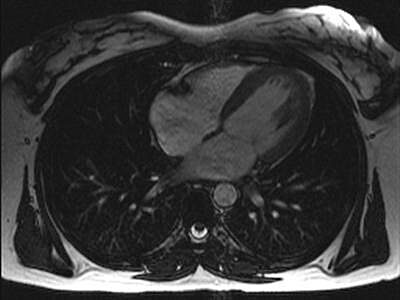Women's Ischemia Syndrome Evaluation – Coronary Vascular Dysfunction study sheds light on a highly prevalent but poorly understood condition

Several physicians from University of Florida Health have recently published findings that shed light on a poorly understood but highly prevalent condition. Drs. Petersen, Anderson, Handberg and Pepine are part of a research team aiming to understand the pathogenesis of heart failure in women that is characterized by signs and symptoms of ischemia, no obstructive coronary artery disease, no coronary microvascular dysfunction and preserved left ventricular ejection fraction.
This study, which forms part of the National Heart, Lung and Blood Institute-sponsored Women's Ischemia Syndrome Evaluation – Coronary Vascular Dysfunction, or WISE-CVD, program of research, has allowed the team to conclude that maladaptive remodeling of the left ventricle in the setting of prolonged hypertension underlies this condition.
According to John Petersen, M.D., an associate professor of medicine in the division of cardiovascular medicine at the University of Florida College of Medicine, these important mechanistic findings demonstrate what can be achieved when a dedicated group of researchers collaborates to explore unique questions. “By acquiring data on a large cohort of patients and then subclassifying them in different ways, we have been able to perform analyses that answer multiple questions,” he said, adding that the results of this analysis represent “one more piece of the puzzle” relating to heart failure in women.
Carl Pepine, M.D., a professor of medicine at University of Florida College of Medicine, has been involved with the NIH-funded WISE program since its inception. For him, this study is important because it provides deeper understanding of a well-recognized health disparity between men and women for which there is no known cause or treatment. “The No. 1 problem in women in the United States is high blood pressure,” he said, “and we speculate that a lifetime of increased blood pressure leads to this maladaptive remodeling.”
The current findings have led to the upcoming WARRIOR study, which is designed to determine whether intensive management of risk factors in this patient population will reduce the incidence of death and major adverse cardiovascular events.
Reference
Elboudwarej O, et al. Maladaptive left ventricular remodeling in women: An analysis from the Women's Ischemia Syndrome Evaluation-Coronary Vascular Dysfunction study. Int J Cardiol. 2018;268:230-235.
Blog Featured Image: https://commons.wikimedia.org/wiki/File:Cardiac_mri_slice_bionerd.jpg used under GNU Free Documentation License